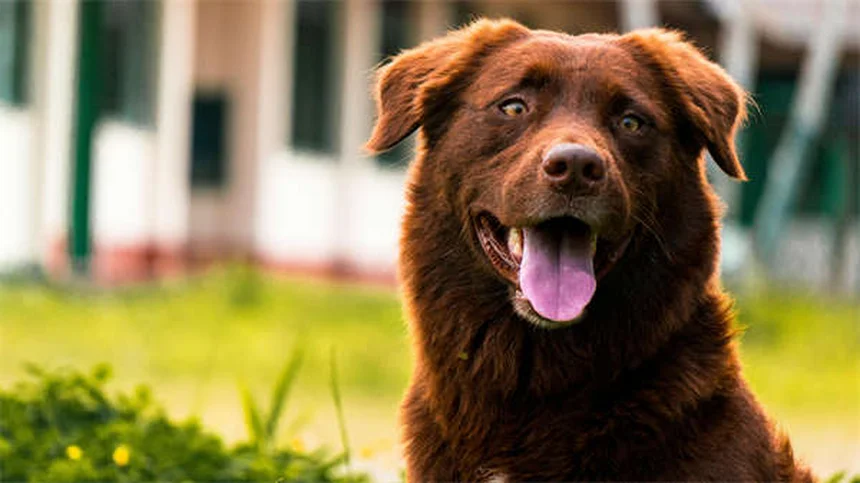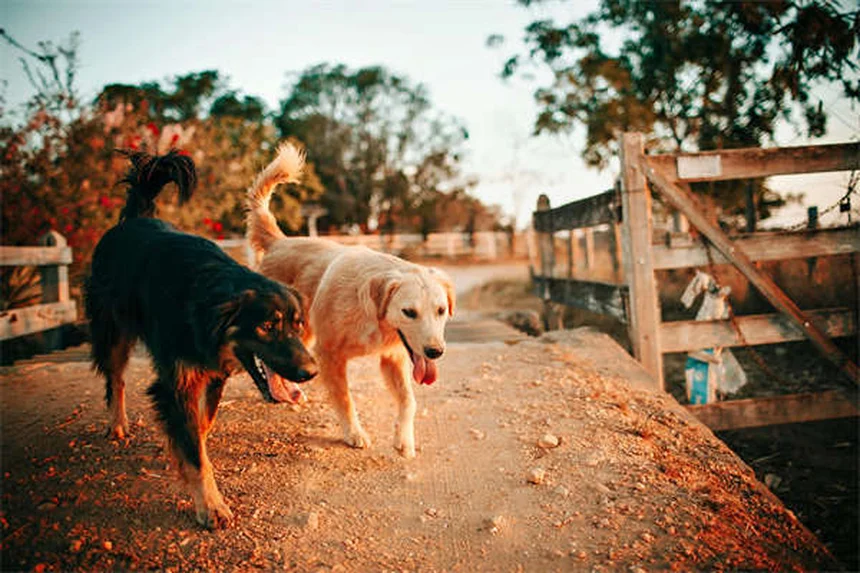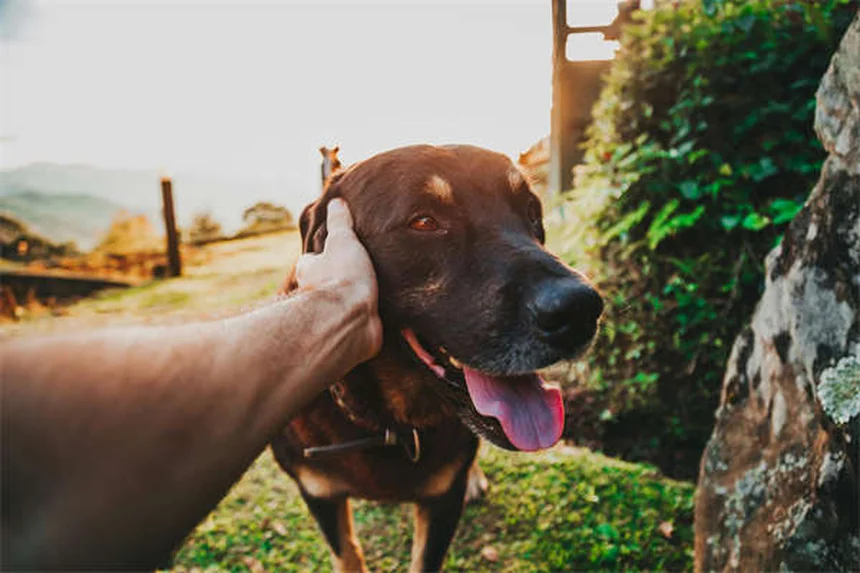Why Do Dogs Bring You Toys? 3 Adorable Reasons Explained
Advertisement
Why do dogs bring you toys when you get home? The answer is simple: your pup is expressing love and excitement! Whether it's my Labrador Max presenting his favorite rope toy or my neighbor's Beagle parading with her plush squirrel, this behavior is their way of saying I missed you! After studying canine behavior for years, I've found three main reasons dogs do this: they want to play, show off their prized possession, or redirect their excitement. Let me break it down for you - this adorable habit actually reveals fascinating insights into your dog's mind and strengthens your bond in ways you might not realize.
E.g. :Hydrolyzed Protein Cat Food: Vet-Approved Guide for Allergic Cats
Advertisement
- 1、Why Does My Dog Bring Me Toys When I Walk In?
- 2、Understanding Your Dog's Toy Behavior
- 3、How Should You Respond?
- 4、The Science Behind the Behavior
- 5、Making the Most of This Behavior
- 6、Your Dog's Unique Personality
- 7、The Emotional Connection Behind Toy-Gifting
- 8、Beyond Fetch: Alternative Play Styles
- 9、When Toy Behavior Signals Something More
- 10、Creative Ways to Encourage Healthy Toy Behavior
- 11、The Unexpected Benefits of Toy-Gifting
- 12、FAQs
Why Does My Dog Bring Me Toys When I Walk In?
You know that adorable moment when you open the door and your pup comes running with his favorite dog toy in his mouth? I've always wondered - why do they do that? After researching and talking to trainers, I discovered some fascinating reasons behind this behavior.
It's Playtime, Human!
Let's be honest - your dog's been bored all day while you were gone. That tail-wagging, toy-bringing greeting? That's pure excitement saying "Finally! My favorite person is home!"
Think about it from your dog's perspective: you leave for hours, they nap (maybe chew a dog toy or two), then BAM - the most exciting part of their day arrives. My Labrador Max always brings his rope toy because he knows that's what we play tug-of-war with. The pattern is simple:
| Dog's Action | What It Means |
|---|---|
| Brings favorite toy | "Let's play our usual game!" |
| Drops toy at your feet | "Throw it please!" |
| Keeps toy in mouth | "I'm so happy I can't let go!" |
Look What I Have!
Some dogs are little show-offs (and we love them for it). My neighbor's Beagle does this hilarious parade where she prances around with her plush squirrel toy, but the moment you reach for it - zoom! She's gone.
Why would they tease us like this? Simple - they've learned that holding a dog toy gets our attention. It's like a toddler saying "Mom! Mom! Look what I can do!" Just pure joy in sharing their prized possession.
Understanding Your Dog's Toy Behavior
 Photos provided by pixabay
Photos provided by pixabay
The Distraction Technique
Here's something you might not realize - sometimes that dog toy is actually helping your pup stay calm. Ever notice how they can't bark with a mouth full of toy? Smart owners use this trick!
When my friend's excitable Boxer starts jumping, she says "Go get your ball!" and like magic - instant focus change. The toy becomes a helpful tool to redirect that overflowing doggy energy into something positive.
It's All About Bonding
Think about this - when your dog brings you a dog toy, isn't that basically their version of bringing you flowers? It's their way of saying "You're special to me."
Different breeds show this differently. Retrievers often want to play fetch, while smaller dogs might just want to show you their treasure. My aunt's Chihuahua brings his tiny stuffed bear like it's the crown jewels!
How Should You Respond?
Positive Reinforcement Works Best
When your pup presents that slobbery dog toy, you've got choices:
- Play along if you have time (they'll love you for it)
- Give a quick pet and "Good boy!" if you're busy
- Redirect to a calmer activity if needed
Remember - this is their love language. Even just acknowledging their offering strengthens your bond. I always make sure to at least give Max a head rub when he brings me something, even if I can't play right then.
 Photos provided by pixabay
Photos provided by pixabay
The Distraction Technique
But what if your dog gets too obsessed with bringing toys? Here's a funny story - one client's Lab would bring so many toys at once he'd trip over them! We worked on:
- Teaching a "settle" command
- Having specific toy times
- Using puzzle feeders to satisfy that need to carry things
The Science Behind the Behavior
Instincts at Play
Ever wonder why this behavior seems so natural? It traces back to wolf ancestors bringing food to the pack. Your living room is their den, and that dog toy? In their mind, it's a successful hunt!
Studies show that dogs who regularly bring toys tend to:
- Have stronger bonds with owners
- Display higher confidence levels
- Show better stress management
Breed Differences Matter
Not all dogs do this equally. Retrievers lead the pack (no surprise), while independent breeds like Basenjis are less likely to present toys. Here's a quick comparison:
| Breed Type | Likelihood to Bring Toys |
|---|---|
| Retrievers | Very High |
| Herding Dogs | High |
| Terriers | Moderate |
| Sighthounds | Low |
Making the Most of This Behavior
 Photos provided by pixabay
Photos provided by pixabay
The Distraction Technique
That dog toy presentation is actually a golden training moment! Use it to reinforce commands like "drop it" or "leave it." I've turned Max's toy greetings into impromptu training sessions that he loves.
Pro tip: Keep special toys just for greetings. This builds anticipation and makes homecomings even more exciting for your pup.
When to Be Concerned
While usually cute, excessive toy carrying can sometimes signal anxiety. Ask yourself: Is my dog relaxing after greeting, or stuck in a loop? If it's the latter, consult a trainer.
The key is watching your dog's overall behavior. Happy, relaxed body language with the toy? Perfect! Tense, obsessive behavior? Might need attention.
Your Dog's Unique Personality
Every Dog Has Their Style
From the Lab who brings you every toy in the house to the Shiba who barely glances up from their nap, greeting styles vary as much as dogs themselves. My favorite? The dogs who bring you random household items instead of actual dog toys - socks, TV remotes, even shoes!
What matters most is understanding what your individual pup is communicating. That wagging tail and hopeful eyes with a toy in mouth? That's pure doggy love, plain and simple.
The Emotional Connection Behind Toy-Gifting
Dogs Speak Through Objects
You know how humans give gifts to show affection? For dogs, presenting toys serves the same purpose. That slobbery tennis ball is essentially your pup's version of a Valentine's Day card! I've noticed my golden retriever picks different toys based on his mood - his favorite stuffed duck when he's extra happy, or a chew bone when he wants quiet companionship.
Animal behaviorists suggest this behavior mirrors how wolf pups bring food to pack members. Your dog isn't just saying "hello" - they're saying "you're part of my pack". The more worn-out the toy, the more significant the gesture, because it's their most treasured possession!
The Comfort Factor
Ever notice how some dogs will bring toys when they're nervous? My friend's rescue dog always carries her plush bunny during thunderstorms. It's like a security blanket!
This behavior makes perfect sense when you consider that chewing releases calming endorphins. That's why stressed dogs often:
- Seek out soft toys for comfort
- Prefer familiar-smelling objects
- May whine while presenting the item
Beyond Fetch: Alternative Play Styles
Tug-of-War Diplomacy
Not all toy presentations mean "throw this!" Some dogs, like my stubborn bulldog, want to engage in a gentle game of tug. This isn't about dominance - it's about building trust through cooperative play. We've established rules:
| Command | Action | Purpose |
|---|---|---|
| "Take it" | Initiate tug | Builds confidence |
| "Drop" | Release toy | Teaches self-control |
| "Easy" | Gentler play | Prevents overexcitement |
This structured approach turns what could be rowdy behavior into a bonding experience. Plus, it's hilarious when my 60-pound bulldog tries to drag me across the floor!
The "Look But Don't Touch" Game
Some pups, particularly terriers, love showing off toys without actually giving them up. Why? Because they've discovered the ultimate way to keep your attention! My sister's Jack Russell has mastered this - he'll parade around with his ratty stuffed monkey for hours if we keep pretending to chase him.
This behavior actually stems from their hunting instincts. The toy becomes "prey," and by teasing you with it, they're extending the thrill of the chase. It's mentally stimulating for them and, let's be honest, pretty entertaining for us too!
When Toy Behavior Signals Something More
Resource Guarding vs. Sharing
Here's something important to watch for: is your dog truly offering the toy, or just showing it off while being possessive? I learned this distinction the hard way when I reached for my shepherd's bone and got a warning growl.
True sharing behavior includes:
- Soft, relaxed body language
- Willingness to release the toy
- Happy tail wags during interaction
If you notice stiffening, whale eye (showing the whites of their eyes), or tense jaws, it's time to consult a trainer about resource guarding.
The Empty-Mouth Greeting
What if your dog greets you without a toy? Don't worry - this doesn't mean they love you less! Some breeds, like many hounds, express excitement differently. My neighbor's bloodhound prefers dramatic full-body wiggles over object presentations.
Interestingly, research shows that dogs who don't bring toys often show affection through:
- More physical contact (leaning, pawing)
- Increased vocalizations
- "Smiling" facial expressions
Creative Ways to Encourage Healthy Toy Behavior
Make a Toy Rotation System
Here's a trick I learned from a canine enrichment specialist: keep only 3-4 toys out at a time, rotating them weekly. This keeps your dog's interest fresh and makes each presentation more meaningful. I use a simple bin system:
| Bin Label | Contents | Purpose |
|---|---|---|
| Current Favorites | 3-4 well-loved toys | Daily interaction |
| Special Occasion | Interactive puzzles | Mental stimulation |
| Retired | Worn-out items | Emergency comfort |
This approach has dramatically reduced my dog's tendency to dump his entire toy box at my feet when I get home!
Teach a "Present" Command
You can actually shape this natural behavior into a cute trick! I trained my dog to "go get a toy" when I ask, which satisfies his need to bring me things while preventing random sock thefts. Here's how we did it:
Start by rewarding any toy pickup with praise. Then gradually shape the behavior by only rewarding when they bring it closer to you. Eventually, add the verbal cue when they're consistently bringing toys your way. Now we have a fun party trick that also burns some mental energy!
The Unexpected Benefits of Toy-Gifting
Stress Relief for Both of You
After a long workday, there's nothing more therapeutic than playing with your dog and their favorite toy. Scientists have found that interactive play:
- Lowers human cortisol levels
- Increases oxytocin (the "love hormone")
- Provides mild exercise benefits
My evening fetch sessions have become such an effective stress-buster that I sometimes think my dog knows when I've had a tough day - he always brings his extra-bouncy ball on those occasions!
A Window Into Your Dog's Mind
The toys your dog chooses to present can reveal surprising insights about their personality. Does your pup always bring the noisiest toy? They might be extra vocal in general. Prefer soft, cuddly items? Probably a sensitive soul.
I've started keeping a fun "toy journal" tracking which items my dog brings in different situations. After six months, clear patterns emerged showing his preferences change with seasons, my work schedule, and even when we have houseguests!
E.g. :Why Do Dogs Bring You Toys When You Get Home? | PetMD
FAQs
Q: Is it normal for my dog to bring me toys every time I come home?
A: Absolutely! Many dogs develop this as a regular greeting ritual. My Lab Max does it without fail - it's like his version of saying hello. This behavior is especially common in retrievers and herding breeds who naturally enjoy carrying objects. The key is observing whether your dog seems happy and relaxed while doing it. If they appear anxious or obsessive, that might need attention. But for most pups, bringing you their favorite dog toy is just their special way of welcoming you home and showing affection.
Q: Why does my dog bring toys but won't let me take them?
A: Ah, the classic "look but don't touch" game! This is completely normal behavior - your dog isn't being naughty. They're essentially saying "Check out my awesome toy!" without necessarily wanting to play fetch right then. My neighbor's Beagle does this hilarious dance where she shows off her toy but dashes away if you reach for it. It's their way of engaging you in their own version of keep-away. Pro tip: try offering a treat in exchange to practice the "drop it" command during these moments.
Q: Should I play with my dog immediately when they bring a toy?
A: While playing is great, it's not always necessary to drop everything. Here's what I do with Max: if I have time, we'll play a quick game of tug or fetch. When I'm busy, I'll at least give him a pat and say "Good boy!" before putting the toy aside. The important thing is acknowledging their offering - even just a few seconds of attention reinforces that positive behavior. Remember, your dog has been waiting all day for this moment, so some recognition goes a long way in maintaining your bond.
Q: My dog never brings me toys - does this mean they don't love me?
A: Not at all! Just like humans, dogs show affection in different ways. While some breeds (like retrievers) are natural toy-bringers, others express love through cuddles, gentle nibbles, or simply staying close to you. My aunt's Chihuahua shows his love by sitting on feet, not bringing toys. The key is learning your individual dog's love language. If you'd like to encourage toy-bringing, try keeping special toys by the door and rewarding them when they pick one up during greetings.
Q: Can I use this behavior for training purposes?
A: Definitely! The toy presentation moment is actually a golden training opportunity. I've used Max's greeting ritual to reinforce commands like "drop it" and "leave it." Here's how: when he brings a toy, I'll ask him to sit first before taking it. Sometimes I'll trade for a treat to practice exchanges. You can even designate certain toys as "greeting toys" to make homecomings more structured. Just remember to keep it positive - this should be a fun bonding experience, not a stressful drill session.







